#ankylosauria
Text

ANKYLOS!
#dinosaur#ankylosaurus#paleoart#digital art#paleontology#prehistoric#tarchia#thyreophora#ankylosauria#ornithischian#herbivore#tank#barrel
2K notes
·
View notes
Text

sketch. standing profile of a saichania in typical clothing, holding his hat
#art#drawing#sketch#painting#sketch painting#anthro#furry#dinosaur#saurian#anthro art#furry art#ornithischian#ankylosauria#saichana#ankylosaur#fantasy art#scalie#dynasoar5#ssohardd
360 notes
·
View notes
Text
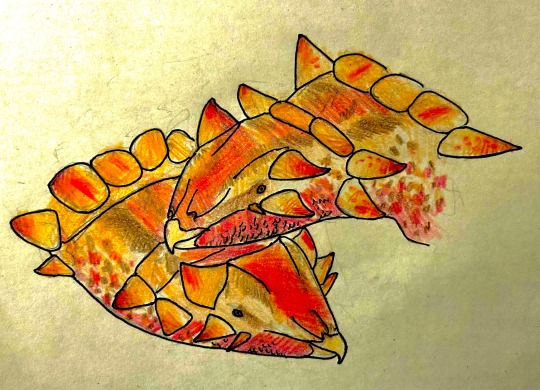
Impresssion of the newly-discovered ankylosaurian dinosaur Datai yingliangis, which lived about 96-90 million years ago in the Late Cretaceous of what is now the Zhoutian Formation of China’s Jiangxi Priovince.
#paleoart#dinosaur#dinosaurs#paleontology#datai#ankylosauria#ornithischians#ornithischian#ornithischia#datai yingliangis
70 notes
·
View notes
Text

hanging with my favourite dinosaur, ❤ MINMI ❤
Minmi paravertebra was small (2.5-3m long) and lived in Australia like me. Perhaps in another life we could have been friends. At least I can draw him having a fun eating apples
#paleoart#dinosaur#australian animals#minmi paravertebra#ankylosauria#art#illustration#elbarklaart#ankylosaurus
56 notes
·
View notes
Text
everytime i learn anything about ankylosauria im just like: thats a bird
109 notes
·
View notes
Text
Hi I will add more photos of Zuul😃
Also I will add another dinosaurs too❗️

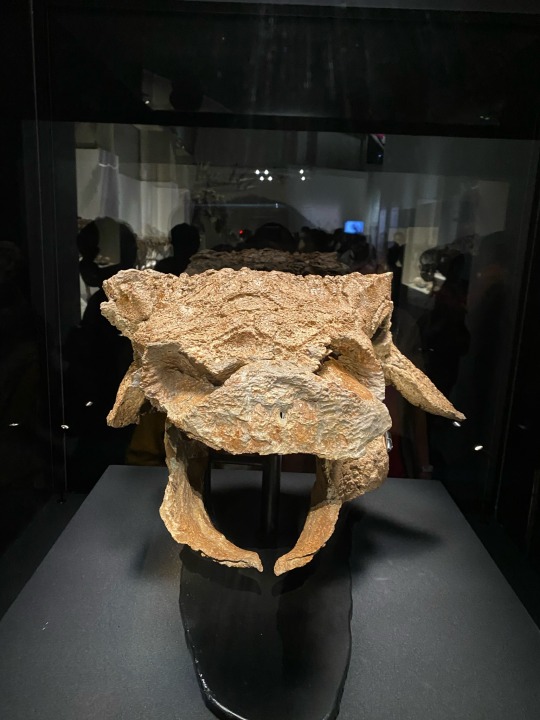
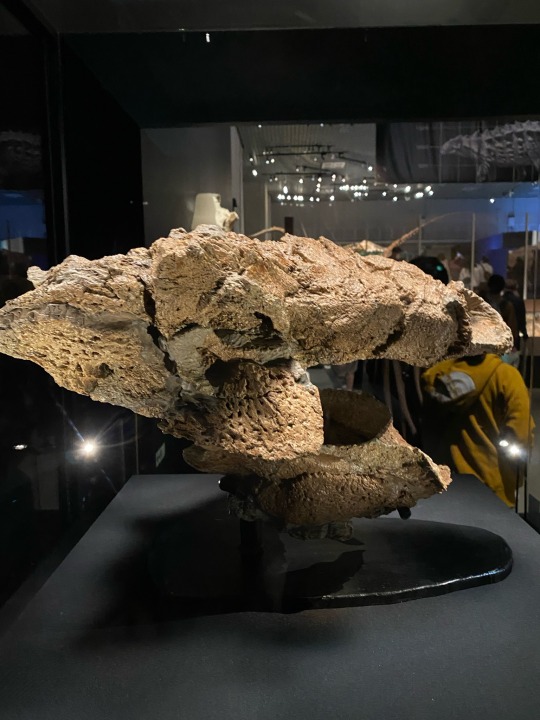
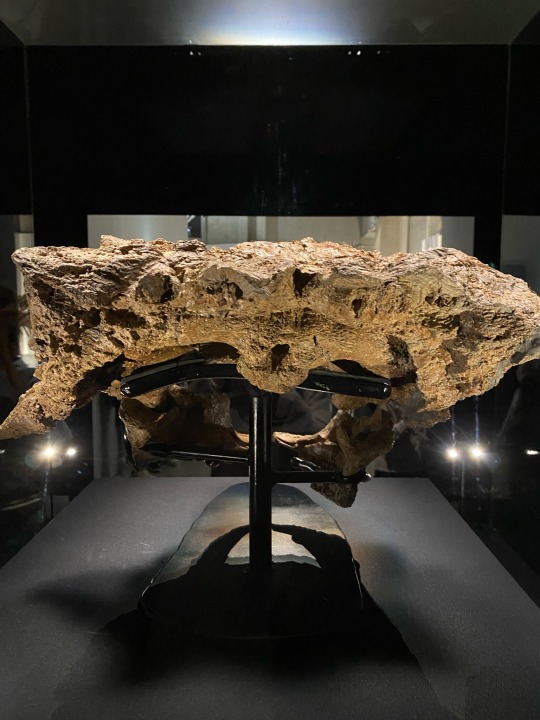
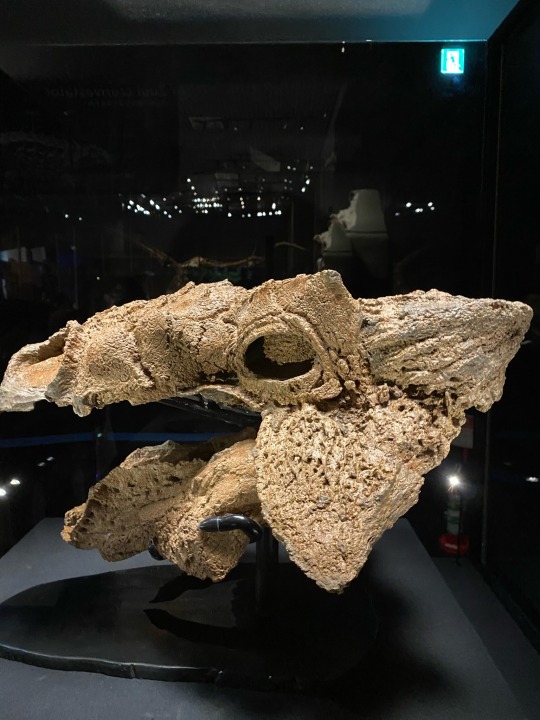
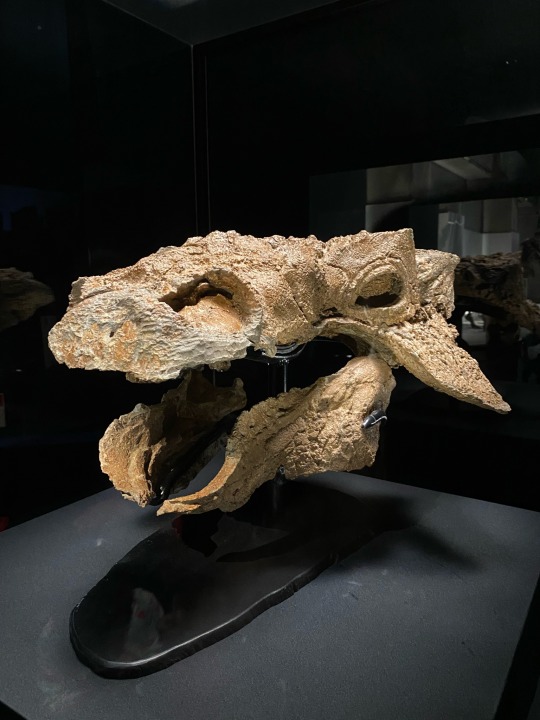
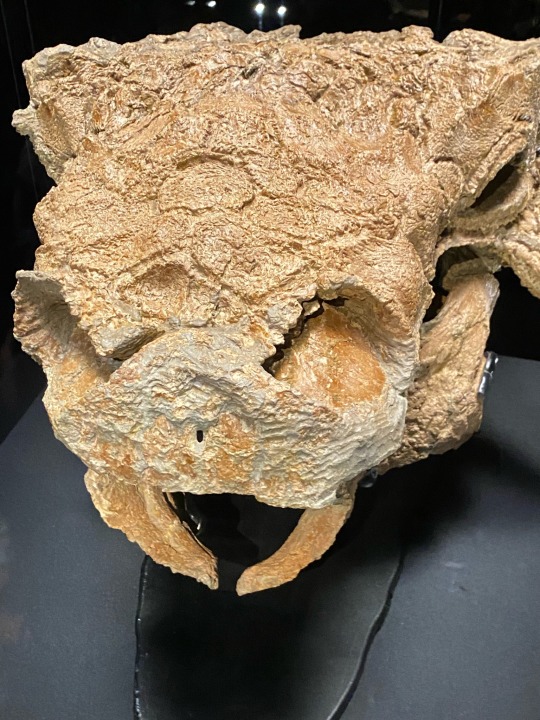



#dinosaur#paleontology#art#japan#ankylosauria#zuul#fossil#museum#science#jurassic world#fossilfriday
249 notes
·
View notes
Text

Alright, something that can actually be read lol. Just some assorted armoured lads. For the meantime, gonna just post some assorted older drawings and whatnot, since I’m not drawing tooooo too much right now.
81 notes
·
View notes
Text
Datai yinliangis Xing et al., 2024 (new genus and species)

(Skulls of Datai yinliangis, from Xing et al., 2024)
Meaning of name: Datai = combination of select characters from the Chinese phrases for "to understand" and "stable"; yinliangis = for the Yingliang Group [stone company that operates the Yingliang Stone Natural History Museum, where the original fossils are housed]
Age: Late Cretaceous (Turonian–Coniacian), between 90–96 million years ago
Where found: Zhoutian Formation, Jiangxi, China
How much is known: Partial skeletons of two individuals, both primarily known from the front half of the body.
Notes: Datai was an ankylosaurine ankylosaur, a group of armored dinosaurs known for their distinctive tail club. It is unique among ankylosaurs in having a pair of small horns protruding from either side of its face. It is also known to have had a large number of small bony nodules forming chainmail-like armor on its throat, a feature that has been found in some other ankylosaurs but is often not preserved.
The two known specimens of Datai both represent juvenile individuals, and were found with the head of one resting on top of the other's. Groups of juveniles have also been found preserved together in another ankylosaurine, Pinacosaurus from the Late Cretaceous of Mongolia and China, which may suggest that social behavior was widespread in juvenile ankylosaurs.
Datai is the first dinosaur (and vertebrate of any sort) to be reported from the Zhoutian Formation based on skeletal remains. Previously described dinosaur fossils from this rock unit have been limited to eggshells.
Reference: Xing, L., K. Niu, J. Mallon, and T. Miyashita. 2024. A new armored dinosaur with double cheek horns from the early Late Cretaceous of southeastern China. Vertebrate Anatomy Morphology Palaeontology 11: 113–132. doi: 10.18435/vamp29396
50 notes
·
View notes
Text
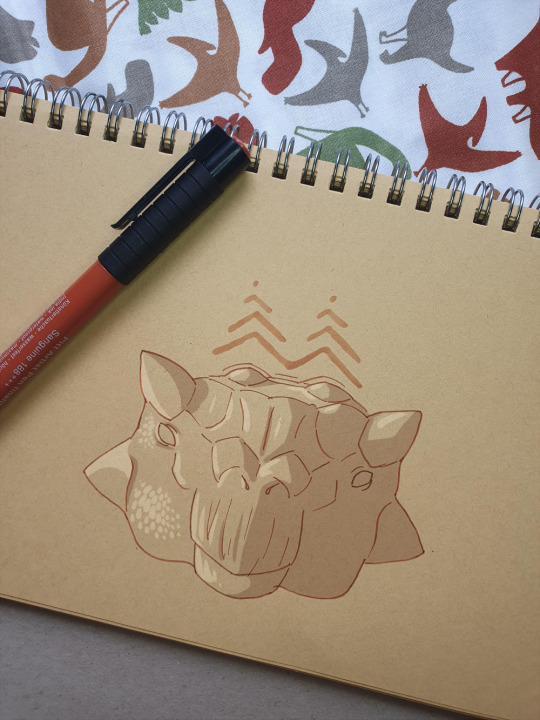
Day 23: Kunbarrasaurus ieversi
#paleoart#art#dinosaur#prehistoric#paleontology#digitalart#traditionalart#Archosaur#Archovember2023#Archovember#Dinovember#Dinovember2023#DrawDinovember#DrawDinovember2023#Kunbarrasaurus#Kunbarrasaurusieversi#Ankylosauria#Ankylosaur#Thyreophora#paleoblr#palaeoblr#digital art
33 notes
·
View notes
Text
Cosmic Ankylo
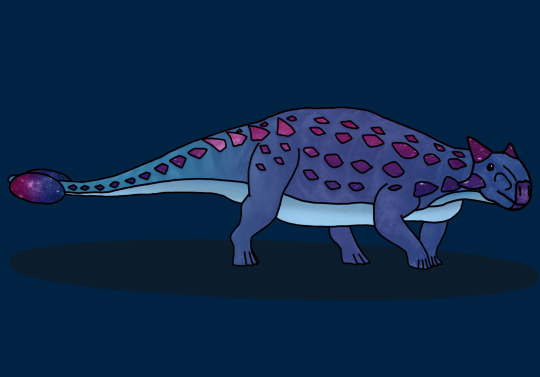
New art piece I made for @SilverStone668 on YouTube! I’m really proud of the galaxy osteoderms. Hope you guys enjoy and make sure to go check out silver on YouTube along with all of the other nobles. This is part of a series of art pieces I’m doing for every noble.
#art#paleoart#dinosaur art#dinosaur#digital fanart#my fanart#paleo art#fanart#dinosaurs#ankylosaurus#ankylosauria
24 notes
·
View notes
Text

Herbivorous Dinosaurs are No Peaceful Pacifists
(i want the hammond collection jp3 ankylosaurus but never found them in any stores)

#jurassic park#dinosaurs#dinosaur toys#jurassic world mattel#jurassic world#stegosaurs#palaeontology#jurassic world fallen kingdom#jurassic world dominion#ankylosauria#kentrosaurus#camp cretaceous#herbivore#ankylosaurus#jurassic park mattel#dino escape#fallen kingdom#paleontology#hammond collection#dominion#jurassic world iii#jp3
25 notes
·
View notes
Text

drawing. ankylosaurid wearing a patterned bluson
#art#drawing#digital art#sketch#portrait#study#ankylosaur#ankylosauria#dinosaur#saurian#anthro#furry#anthro art#furry art#scalie#fantasy art#dynasoar5#ssohardd
149 notes
·
View notes
Text
This year has gone by fast! There are only 44 more days left of 2023 so to celebrate I’m gonna make a post about five extinct animals that were described this year!
1. Bos primigenius thrinacius n. ssp.
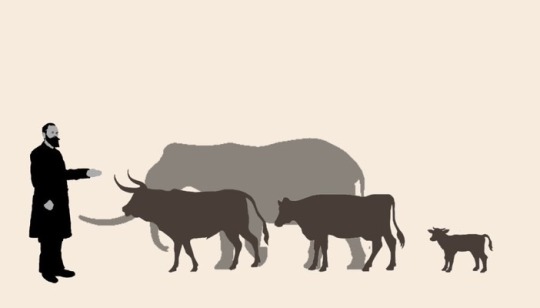
(Bos primigenius thrinacius n. ssp. Size estimate of a bull, cow, and calf compared to a human and an adult Palaeoloxodon falconeri. Art by Joschua Knüppe)
This new sub species of Aurochs lived on the Greek island of Kythera during the Late Pleistocene. The sub species was probably present on Kythera while it was still part of the mainland, but became trapped when it was separated sometime during the Middle to Late Pleistocene and their small size was a result of insular dwarfism. Insular dwarfism is a common phenomenon in evolution where a population of large animals becomes trapped on an island and slowly evolve to become smaller over time to better adapt to the reduced space and resources. The opposite, insular gigantism, where an island-bound population of small animals grows larger than their mainland counterparts also occurs regularly. During the Pleistocene, the various islands of Greece were full of giant swans and miniature elephants but now we know they had tiny cattle roaming about as well.
2. Garumbatitan morellensis
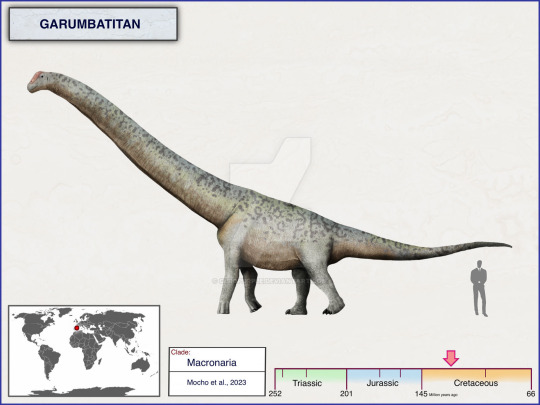
(Size comparison between Garumbatitan morellensis and a human. Art by cisiopurple on Deviantart)
Meaning “Garumba Giant”, Garumbatitan morellensis was a species of sauropod dinosaur that lived during the Cretaceous period in what is now Spain. Its remains were first discovered in 1998 at the Arcillas de Morella Formation near the city of Morella, however, they would not be excavated until an expedition in 2005. More material would later be discovered in a 2008 expedition and a paper would be published on the findings in 2016, but it wasn’t until this year that the species was officially named and described. Its genus named is a mix of the name for the tallest mountain in the region it was discovered in, Mola de la Garumba, and the Greek word “Titan”.
3. Nihohae matakoi
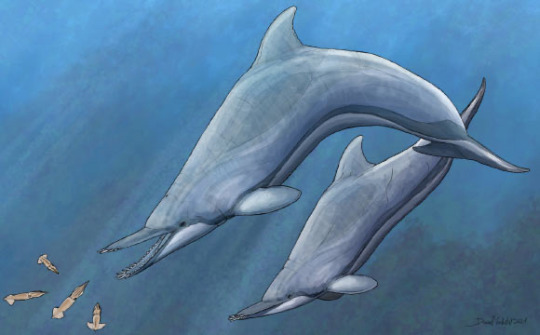
(A pair of Nihohae matakoi hunting some squid. Art by Daniel Verhelst)
Nihohae matakoi was a species of dolphin that belonged to the now extinct Waipatiid family and lived during the Oligocene in the waters surrounding what is now New Zealand. It possessed a bizarre set of tusk-like teeth that protruded from its beak. It is thought that this dolphin used it’s strange teeth much like a sawfish to stun their prey before consuming them. The holotype specimen was discovered all the way back in 1998 in Awamoko Valley on New Zealand’s South Island. The specimen consisted of a nearly complete skull, a single atlas and axis, eight vertebrae, and seven ribs. However, Nihohae matakoi would not be officially described until 2023. Its genus name combines the Māori words “Niho”, meaning “teeth”, and “Hae”, meaning “slashing”. The species name is also derived from Māori and comes from the words “Mata”, meaning “face” or “point”, and “Koi”, meaning “sharp”.
4. Perucetus colossus
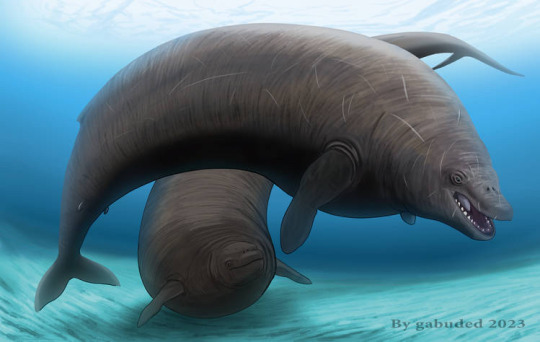
(A pair of Perucetus swim together in the shallows. Art by Gabuded on Deviantart)
Another cetacean, Perucetus colossus was a species of early whale that lived during the Bartonian age of the Middle Eocene and was found in Peru (obviously). The remains we have or Perucetus are pretty fragmentary, but it has an estimated length of around 55.8-65.9 ft and was probably just as, if not heavier, than the modern Blue Whale. Due to the density of its bones and its absolute chonkiness, Perucetus likely was not a fast swimmer and likely lived in shallow waters and fed on crustaceans and mollusks. However, this is just speculation as very little about its ecology is known.
5. Vectipelta barretti

(A pair of Vectipelta barretti graze near a stream. Art by Stuart Pond)
Vectipelta barretti was an ankylosaurian dinosaur that lived during the Early Cretaceous in what is now England. It was discovered in the Wessex Formation and it’s genus name means “Isle of Wight shield”. The holotype specimen of Vectipelta was originally discovered in November of 1993, however, at the time it was believed that the specimen belonged to the genus Polacanthus. In May of 2021 it was discovered that the specimen was in fact a new genus and in June of 2023 it was officially named and described. Funnily enough, fossil evidence suggests that Vectipelta might be millions of years older than Polacanthus, the genus it was originally thought to be a member of.
I hope you all enjoyed reading about these recently described prehistoric species! I LOVE dinosaurs and other extinct animals and can’t wait to see what new discoveries 2024 has to offer!
#dinosaur love#animals#new discoveries#infodump#science#dinosaur#peru#new zealand#isle of wight#Kythera#new species#animal news#animal facts#dinosaur facts#paleontology#spain#2023#ankylosauria#sauropod#aurochs#cetacean#perucetus
24 notes
·
View notes
Text
Autumn Ankylosaurus

#speculative biology#speculative ecology#speculative evolution#traditional art#speculative zoology#traditional sketch#spectember#specposium#fanart#paleontology#paleostream#paleoblr#paleomedia#paleoillustration#paleo art#paleontologist#paleoart#paleo meme#ankylosaurus#ankylosauria#autumn#autumn art#sketch#prehistoric#flora and fauna#wind
23 notes
·
View notes
Text

These are the WIPs for those stickers btw
Free icon request for whoever can guess the pink dinosaur!! They're all the same one, but the reference photos I've pulled for this series vary wildly! The hungarosaurus is actually a little plastic model at 3 different angles!
#art#digital art#dino#dinosaur#dinosaurs#ankylosaurus#ignore the type in the sticker post btw#ankylosauria#euoplocephalus#hungarosaurus#nodosaurus#mystery#mystery dino#free icon request#basically I draw you a profile picture or sticker#you get a digital file
13 notes
·
View notes
